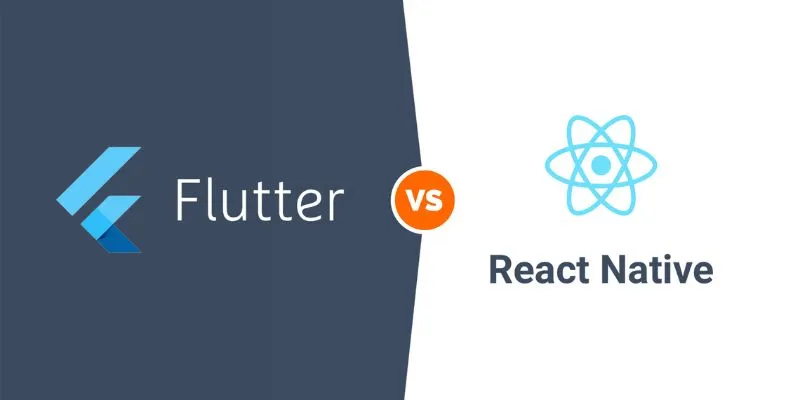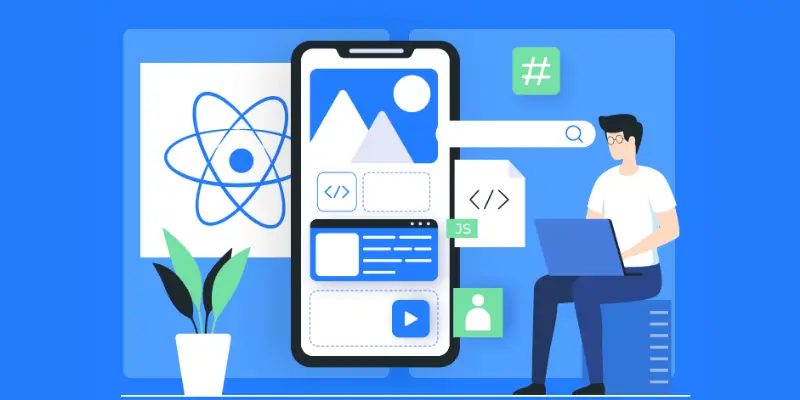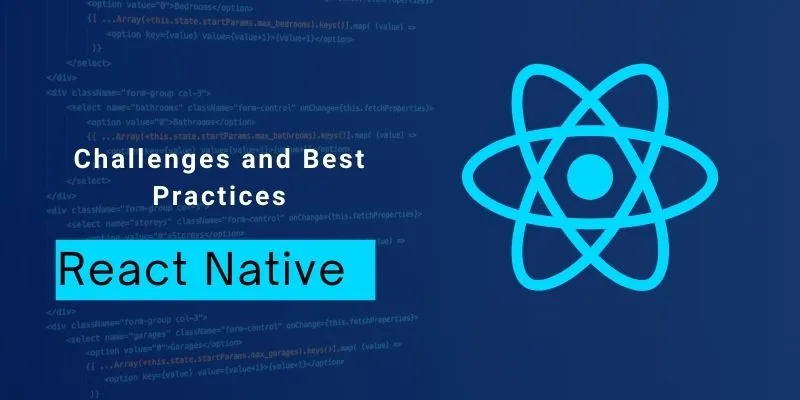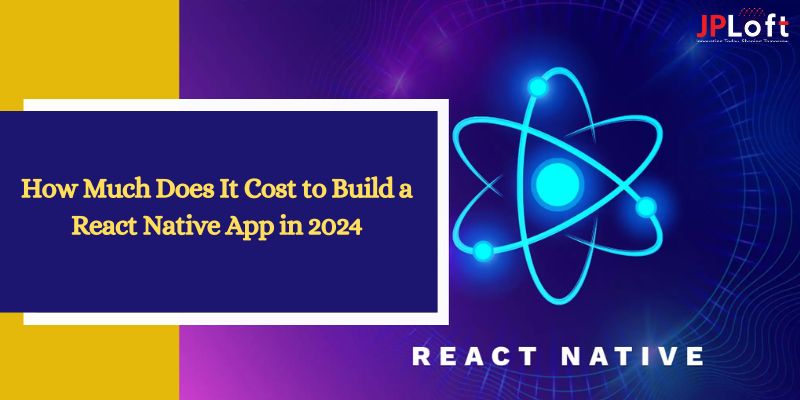Flutter and React Native have witnessed rising interest due to the rapidly expanding mobile market. Businesses targeting larger client bases with apps that work seamlessly across platforms and app developers creating apps without altering user experiences across devices are all eager to use frameworks designed for cross-platform development, like Flutter or React Native, to create applications.
Flutter and React Native are two frameworks with distinct strengths and weaknesses. Both offer companies an agile development environment. By choosing either, companies can increase user engagement while decreasing cost and time savings for themselves and their users.
Flutter and React Native are cross-platform development frameworks that help developers write code once and then apply it across various platforms quickly for maximum efficiency with minimum development time. This improves efficiency while expanding reach. Flutter also uses mobile platforms, allowing the development process to move more rapidly while broadening access for wider audiences.
What is React Native?
React Native is an application framework that blends the best elements of native development and React to create user interfaces. It allows you to develop mobile applications using JavaScript. You can download mobile applications from the Google Play Store and the Apple App Store.
Advantages of Flutter
Quick Coding: As one of the most advanced platforms for developing apps, this technology allows developers to build high-performance applications quickly.
Hot Reload: Since Flutter's platform allows developers to view the changes made immediately, this reduces time, resulting in more efficiency and greater productivity. Flutter's hot reload feature gives it an advantage over competitors' similar features, allowing developers to stop code execution, make adjustments to their code, and then keep coding in the same location and at a much faster pace.
Widgets: One of Flutter's main features is that it utilizes pre-made apps that ensure a consistent design and development model. Because these widgets are based on Google, they have excellent quality code and perform well over other open-source frameworks. Many can be customized using materials and Cupertino appearances, which provides an essential benefit.
Minimal Coding: The programme language used by Flutter, i.e., Dart, is directly compiled into the ARM code of mobile phones, which helps accelerate applications and allow for faster launch. Flutter helps developers relax by integrating third-party apps and a native codebase.
Attractive user Interface: As per Will Larche (Google software engineer). Flutter's architecture was created to provide a stunning and personalized user Interface. Its main goal is to make custom apps that provide a quicker interface and an enjoyable experience. It's a robust tool that allows designers to sketch whatever they want.
Flexible Design: Flutter includes an open-source, high-performance graphic engine known as Skia, which other big business companies like Adobe, Chrome, and Amazon Kindle are also using. This potent tool allows users to create custom applications that offer equally great experiences on iOS or Android devices. Additionally, the chance of UI malfunctions in software updates is reduced.
A Similar UI for All Platforms: No matter what operating system you use, Flutter shares the same user interface and business logic for Android and Apple devices for an unmatched experience. This feature is essential, especially for companies with distinct corporate styles.
Disadvantages of Flutter
While Flutter has many advantages, it's not a secret that it also has negatives. Despite its drawbacks, Flutter is one of the most popular games on the market.
Absence of Third-Party Libraries: Absence of Third-Party Libraries significantly influences software development by providing developers with access to additional features that are usually open-source and free. They also come already tested. Because Flutter is among the most recent platforms in the mobile app market development, it's still developing and has only a few options for third-party libraries and applications.
Massive File Size: An additional difficult-to-understand negative aspect of Flutter is the huge size of the files used by apps. Every smartphone user requires more memory space. Because many older devices cannot accommodate additional apps, you may need to decide between photos, apps, or other files. Small file sizes will give you better speed and runtime and are among the disadvantages of Flutter.
Need to be skilled: While Flutter is an easy language to learn, programmers must first master DART. In addition, another phase involves learning Flutter, which could increase the duration and cost of a project.
What is Flutter?
Flutter is a mobile application that runs on multiple platforms. It is a development framework created by Google. It provides developers with an easy process to develop and deploy visually appealing natively built apps for smartphones (iOS, Android), desktops, and the web with one code base.
Advantages of React Native
Optimized Performance: Assessing the performance of a platform is based on the performance improvement of native controls and modules. React Native app integrates directly with the native iOS and Android components and continues to create native API codes without interference. Using distinct threads that are different are Native APIs, UIs, and native apps. React Native app can result in improvement and performance.
Live Reloading and Hot Reloading: Live Reloading aids in compiling and reading the modifications created by the programmers. It also adds an updated file in the simulator, which will automatically load the application from its beginning. Hot reloading lets source changes allow the developer to see the code even if he doesn't recompile the application. React Native's feature is called hot reloading. React Native allows developers to see immediate results after modifying the code. This results in less time waiting.
React Native's Simplified User Interface: UI is simple and less complex. Its design resembles an open-source network rather than a traditional one. It uses an interface for software that eliminates unnecessary elements to create proper application timing. With user experience as an important factor, applications developed using React Native provide a smoother UX and a responsive UI that loads faster.
Modular Architecture: Modular designs and architecture allow developers to update or upgrade their applications immediately. With its user-friendly design, React Native app allows other developers to dig into another developer's project to further develop it or make modifications. Furthermore, testers take less time to grasp the program's logic and design suitable tests.
Disadvantages of React Native
Problems with Debugging and Compatibility: It might be a shocker that six years after its introduction, React Native app is still in the beta stage. Furthermore, since React Native is developed using Javascript, C/C++, and Java, the debugging process is extremely complex and exhausting. To solve this problem, it is necessary to integrate with Flipper, which provides a collection of tools that can be used to debug the process.
A Complex User Interface: If you're looking to create a mobile app composed of a variety of motions, transitions, or interactions, React Native is not the best choice for you. A gesture-responsive system also won't solve the issue since both the Android and iOS touch subsystems share unidirectional APIs and are quite different.
Framework is Nascent Development: With constant improvements within React Native app development, developers cannot adapt and adjust to the latest developments. In its attempt to speed up, React Native has lost its credibility as it became too mature to be used on Android and iOS. The adaptability offered by React Native apps is below that of native apps.
It's more Challenging to Create a Cross-Platform Team: Since React Native is the first cross-platform tech, the team should be familiar with web technology (Java, React) and native technologies (CI, UX technologies). Creating an entire team that can tackle all the issues that arise when developing cross-platform applications is challenging.
What Should Be Your Choice: Flutter or React Native?
In recent years, cross-platform applications have seen an increase in acceptance. It is imperative to compete in the development of the best app. So, the next issue is which of these two platforms, Flutter and the React Native frameworks is best suited to your expectations and requirements. To answer this question, examine these two frameworks again, based on the benefits of cross-platform apps.
Code Reusability: Thanks to widgets' support, code reusability is more efficient and results-oriented for Flutter app development.
UI Consistency: Flutter is a better choice for rendering the same UI designs on the two popular mobile platforms: iOS and Android.
Shorter time-to-Market: As stated in the past, Flutter promises a shorter time to develop and is superior to React Native app in this way.
Cost-Effectiveness: Development costs could be similar using one of the frameworks. However, it will depend on the team's skill in developing it.
Extra Reach: Cross-platform applications always have a larger audience than native apps. This is based on the basic design that you provide.
-
Select Flutter if the application requirements meet the following criteria:
-
If your app doesn't require any native functions.
-
If you need more money and are working with a tight timeframe to finish your project.
-
You must publish your product as soon as possible and write code fast.
-
If you'd like to use one codebase with support for multiple platforms.
-
Are you looking for an application that can run between 60 and 120 FPS?
You require a user-friendly, customized interface with widgets.
Select React Native
If your app's requirements meet the following criteria:
-
If you're trying to expand your current project by using cross-platform components.
-
If you're not limited to a time frame or budget.
-
There is a need to design lightweight and simple native apps.
-
You need to develop shared APIs from scratch.
-
Are you looking to create an app that is asynchronous in design and has an attractive user interface?
Flutter vs. React Native: An In-Depth Comparison
.webp)
When it comes to selecting the best framework to develop cross-platform mobile apps, two popular contenders usually appear: Flutter and React Native.
Each Flutter and React Native offer developers the capability to develop high-quality and robust apps that work on both iOS and Android platforms. However, they differ in many aspects, such as their core technology, performance, and ecosystem.
Let's conduct a thorough analysis of Flutter and React Native to assist you in making an informed choice.
Technology Stack
Flutter:
-
Flutter was developed through Google; Flutter utilizes the Dart programming language.
-
The compiler converts Dart code directly into your machine's native code, providing the highest performance and a smooth user experience.
-
Flutter has a complete collection of built-in widgets and provides a reactivity framework for creating user interfaces.
React Native:
-
React Native app was developed through Facebook. It is an application based on JavaScript that uses JSX (a mixture of JavaScript and an XML-like syntax).
-
It does not compile JavaScript codes into the native language, but it executes them as-is by using a bridge to connect with native components.
-
React Native app offers a vast library of third-party libraries and components thanks to its extensive community-based assistance.
Performance
Flutter:
-
Direct compilation of Flutter's native code produces smooth and high-performance animations.
-
It removes the requirement for a JavaScript bridge, which results in speedier startup times and lower costs.
-
Flutter's hot reload feature enables developers to iterate and make modifications rapidly, improving development efficiency.
React Native:
-
Although React Native app offers outstanding performance for most applications, it can occasionally experience performance slowdowns due to the overhead of its JavaScript bridge.
-
The performance of React Native apps heavily depends on the performance of the bridge between JavaScript and the native elements.
-
React Native's hot reload feature allows React native app Development Company to monitor changes in real-time, allowing for the rapid creation of new features.
Platform Support and Compatibility
Flutter:
-
Flutter works well with Android 4.1 and iOS 8 or higher versions, providing broad compatibility across different devices.
-
It also supports desktop and web platforms, allowing developers to support different platforms using one codebase.
React Native:
-
React Native app supports Android 4.1 and iOS 10 or newer versions and covers a variety of devices.
-
While the primary focus is on mobile platforms, the community-driven initiatives of React Native offer support for other platforms, such as desktop and web, through initiatives like React Native Web and React Native Windows.
Ecosystem and Community
Flutter:
-
Flutter's ecosystem is rapidly growing, with an increasing number of packages and plugins available on pub.dev, the official package repository.
-
Google's backing guarantees the long-term stability of Flutter and the constant improvement of the Flutter Framework.
-
Flutter's community is friendly and welcoming, with extensive documentation, tutorials, and discussions for programmers.
React Native:
-
React Native boasts a mature ecosystem with an extensive array of third-party libraries, tools, and libraries that simplify integrating different functions within your app.
-
Facebook's involvement guarantees regular updates and enhancements for React Native.
-
React Native has a big and active community that offers information, tutorial forums, and open-source contributions.
React Native in Comparison to. Flutter: A Glimpse into the Future
As we approach 2025, the mobile app landscape development continues to change, including Flutter and React Native, leading the charge in innovation and adaptation. Both platforms have experienced significant changes and gained the attention of major players in the field. Let's look at the future of the two frameworks:
Flutter's Promising Trajectory
Flutter made significant strides in 2022 and caught the attention of businesses worldwide. With each release, Google has fortified its toolkit, introducing new features and functions. Version 2.10 of Flutter is a significant milestone that extended stable support to Windows applications. This extension to desktop app development has generated enthusiasm from many organizations.
The attraction of Flutter is in the following:
-
It provides sophisticated features, such as those of the Dart Virtual Machine, contributing to better capacity and performance overall.
-
Introduces a more efficient tracing feature to simplify debugging and optimize applications.
-
It continues to expand its community and provide developers with a broader selection of tools and libraries to simplify development.
-
Enhances views on web platforms and performance in response to the increasing need for cross-platform applications.
-
It significantly decreases the time it takes to start up, with notable gains of up to 50% on low-end devices and 10% on top-end devices.
-
The Flutter team is considering developing Windows applications to expand its capabilities to desktop platforms.
-
Encourages to hire react native developers, highlighting the rising need for highly skilled experts within the Flutter development market.
React Native's Resilient Evolution
At the same time, React Native has maintained its popularity, which is supported by Facebook's vast restructuring efforts. Thanks to its flexible framework and robust set of features, it continues to draw developers.
The most significant improvements of React Native include:
-
Introduces Window Dimensions Hook for better handling window dimensions when developing apps.
-
Support for frameworks has been improved, including comprehensive assistance for CocoaPods integration.
-
Enhance the user experience for developers with Speedy Refresh rates and combine hot reloading capabilities to speed up iteration.
-
It emphasizes stability through consistently maintained APIs, creating an extensive GitHub repository, enhanced documentation, and a wide range of support tools for the open-source community.
Conclusion
In the article, we've provided you with the two most popular platforms for app development and the ones you should be using in 2025. The decision to use React Native or Flutter should first be determined by what you plan to achieve with your app.
When you're done, knowing each platform has strengths and disadvantages is essential. To choose the right one among Flutter and React, it's worth employing mobile app developers. With the help of the React native app Development Company, you will be able to assess your project needs and know which is the most appropriate choice to build your project.












Share this blog